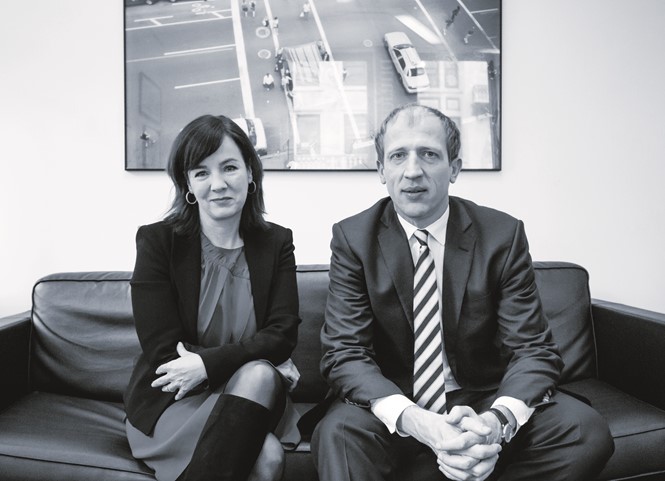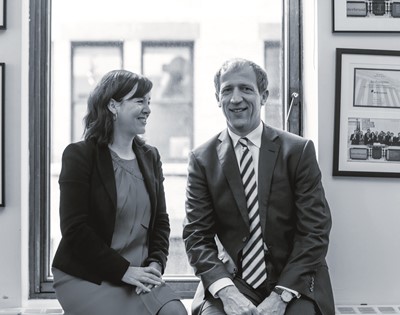Brand profile: Siemens

Less than a year after the appointment of a new CEO, Siemens started a brand revitalization process. Now, halfway through that journey, the brand team shares its progress with Andrew Thomas
All too often, writing about brand development is a historical process. Most journalists writing on the subject are used to the phone call from a company’s press officer, to discuss yesterday’s news. Breathlessly, the hapless PR person says, “We’ve just rebranded, well, last month. Would you be interested in covering it?” Alternatively the call to the brand director or CMO to elicit information about the ongoing rebrand (already covered in the general business press) is often met with a paranoid response, a quick fob off and a phone call two hours later from the company’s media agency promising to give you the complete story when the process has finished, if only you’ll hold off for now. Whichever call, all too often it’s just the visual identity that’s up for discussion and not the brand strategy.
It was a welcome relief, then, to discuss the ongoing brand journey of Siemens with two of the senior executives tasked with running the project. Less than half-way through a major refocus of the Siemens brand, neither Birgit Berthold-Kremser, head of brand and campaigns at Siemens nor Joachim Kraege, Siemens’ head of strategy development see any reason not to share their progress.
“It’s not a secret that we are working on revitalising the brand. I don’t think there’s anything we need to hide,” says Berthold-Kremser, with Kraege adding, “Its a very strong brand with a very strong history. We’re bringing the brand and the strategy closer together. We’re proud of Siemens’ brand’s past, present and now we look to continue that into the future.”
This brand revitalisation process began in the summer of 2013, when Joe Kaeser took over from outgoing ousted CEO Peter Löescher. Siemens, often described as the General Electric of Europe and whose products range from transportation to turbines, production machinery to medical equipment, had lost faith in Löescher following poor performance and a number of profit warnings. In his first statement after taking the position, Kaeser said Siemens was, “Certainly not...in need of major restructuring.”
In November, however, he announced a six-month review of the company’s strategy and, conforming to a German stereotype, delivered it six months to the day on 7 May of this year.
Kaeser’s review was wide-ranging, but the most reported aspects were the elimination of the sector level, the narrowing of the number of divisions from 16 to nine and the streamlining of the company’s focus to electrification, automation and digitalization. It was a strategic review, and Kaeser, clearly understanding the relationship between brand and strategy, tasked Berthold-Kremser and Kraege to revitalise the brand.
One of Kaeser’s goals had been to break down some of the silos between departments. Berthold-Kremser and Siemens hadn’t worked together but both seemed to share similar aspirations for Siemens. As Kraege points out, “Although we came to this independently from different areas of the business, we both shared a vision of what we could achieve. And we both had a vision and a loyalty to Siemens above our own departments.”
Kraege has held senior management positions with Siemens for the past 15 years, and his background is firmly in engineering. He served as an apprentice for an air conditioning firm in northern Germany and worked as an engineer in his homeland before moving to the UK to study. A stint of travelling around Asia for a Dutch semiconductor firm gave him the management and operational experience that he needed for the move to Siemens.
As head of strategy, Kraege is responsible for the corporate strategic development of the company. He works across divisions, mainly working on the long term impact of transformation projects. With Kaeser’s strategic review focusing on the next six years it was, perhaps, unsurprising that Kraege was called in. “In any organisation, whenever a new CEO arrives he brings new ideas, experience. It is my department’s responsibility to support this new strategic concept.”
The choice of Berthold-Kremser to work on the brand’s focus was a little more obvious. Berthold-Kremser had run Siemens corporate sponsorship and events for just over four years, before a restructuring of the corporate communication department saw her role change, and she assumed responsibility for advertising and brand. Berthold-Kremser was delighted. “I’ve always been in love with branding,” she says. “When they offered me this role, my first thought was ‘Wow, am I really able to do something like that?’ It is my dream position.”
She thinks her slightly eclectic career made her an obvious choice to drive the brand refresh. Her background has included time in both PR and marketing, with stints in tourism, technology and travel. “I am a bit of a generalist and I do think that’s something that was needed for this brand position,” she says.

“WE WANT TO FOCUS ON THE POTENTIAL OF THE TRANSFORMATION OF THE COMPANY AND THAT’S WHY WE TOOK THIS JOURNEY”
She’s been with Siemens for 14 years. She started in a regional position, working in Vienna in a senior role in the Austrian communications department. Returning after maternity leave, she took over the marketing communications for all of the central and eastern European offices. It was a big role leading a team of communicators. She also had responsibility for 17 countries in the region. “In many ways we acted like a consultancy, supporting the offices throughout the regions,“ she says.
Berthold-Kremser feels that this regional experience combined with her more recent corporate, head office, experience has certainly helped bring a more collaborative approach to the brand focus.
With Kraege’s strategic insights and Berthold- Kremser’s passion for brand communications there’s that sense of right and left brain hemisphere’s working together, a point Kraege concedes. He understands that, historically, German engineering focused on the strategic concept. Between them, he feels that they’ve moved the conversation forward, “We’ve managed to articulate within the company how we can emotionalise strategy and this has assisted the entire discussion about brand, about what we stand for, and who we are.”
Part of that collaboration has been with the brand strategy agency, Interbrand whose US CEO Josh Feldmuth has spent an increasing amount of time travelling from New York to Munich recently. Berthold- Kremser feels the relationship goes beyond that of normal agency and client, saying they’ve, “Really been part of the team.”
Excluding Interbrand, that team has extended to six people, from both Kraege’s and Berthold-Kremser’s departments. They haven’t worked in isolation, however. Like most projects of this nature, the opening process started with a brand audit. Kraege felt this process unearthed obvious strengths and weaknesses, but highlighted two key areas for improvement. These were sincerity and commitment. According to Kraege, “The most sincere and the most committed stakeholders are our employees. We realised that the first step in the process of revitalising the brand was to make them understand the strategic concept of Siemens. If we could bridge this and bring this clarity into the wider world, make our employees engaged and connected, then that sincerity and commitment would be more clearly understood.”
The brand audit process involved about 1,000 people. The research was intended not just to throw a spotlight on the short term but illuminate asense of direction for the next five to ten years. “We wanted to build this into a sustainable long term process,” says Berthold-Kremser. It’s still early days, but the initial outcome is of a need for the Siemens brand to reflect a greater sense of ownership culture within the organisation. The likely outcome is a drive to instigate a greater sense of pride about being a Siemens person.
This sense of belonging has been important, but the research didn’t just highlight internal change drivers. Like many other B2B businesses, Siemens identified a need for the brand to engage on an emotional level. “A USP is not enough anymore,” comments Berthold- Kremser. “It’s not what people buy, it’s what they buy into. It’s all about purpose. As the game is constantly changing, we need to know what our role will be tomorrow and how we achieve longterm success: What will be our contribution? What will be our purpose?”
This process, and the need for increased ownership, is being distilled into a new mission statement. Once that’s complete it will be shared across the internal audience first. It’s brave of the brand team to share its insights thus far, but there is still an understandable reluctance to put too much out in the public domain. “Planning needs to start from within, and great brands start with the employee. It’s no secret that we have a new mission but we wouldn’t share too much before sharing it with the internal audience,” Berthold-Kremser says adding that all sides of the organisation have been included. “We’ve made sure human resources have been part of the process.”
Neither Kraege nor Berthold-Kremser think they’re creating a brand new positioning for the company. They’re adamant they’re not working on a rebrand, but on a refresh. “The positioning of our company is based on our heritage. Siemens is one of the world’s leading technology companies, founded more than 160 years ago, so we don’t think we’re going to rebrand the organisation. There’s no reason to do that. Our view is that it’s a brand revitalisation,” says Berthold-Kremser. Kraege adds, “We want to focus on the potential of the transformation of the company and that’s why we took this journey.”
Kaeser’s review was named ‘Vision 2020,’ a self- explanatory title highlighting the timescale for the transformative vision he has of the company. Kraege and Berthold-Kremser don’t have the luxury of that timescale. They’ve finished the strategic brand review and will present this and the brand changes to the internal audience first. They’re relcutant, however, to put a date on an extenal rollout.


